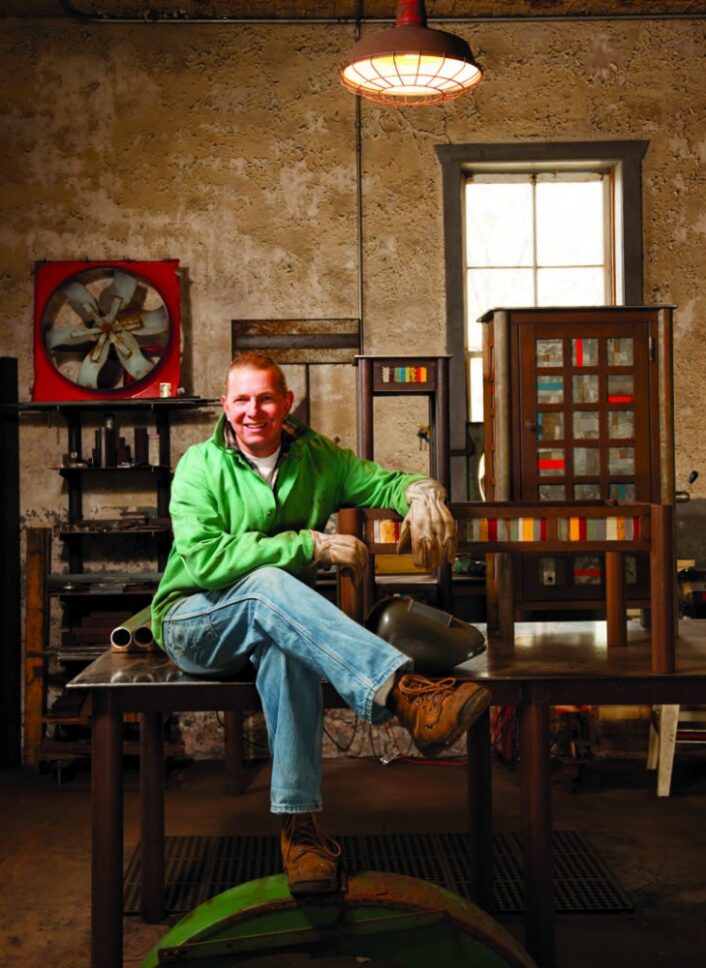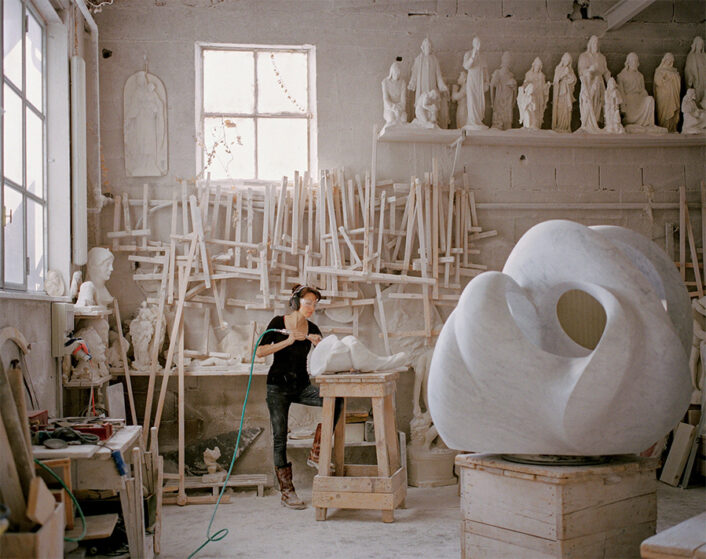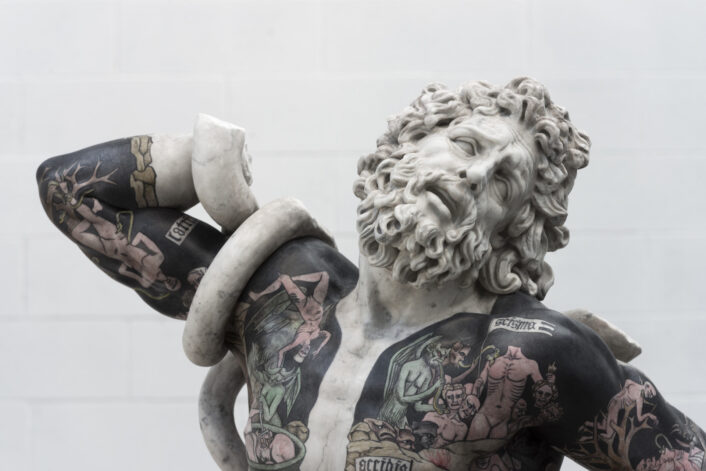Fine Art
Sanford Biggers
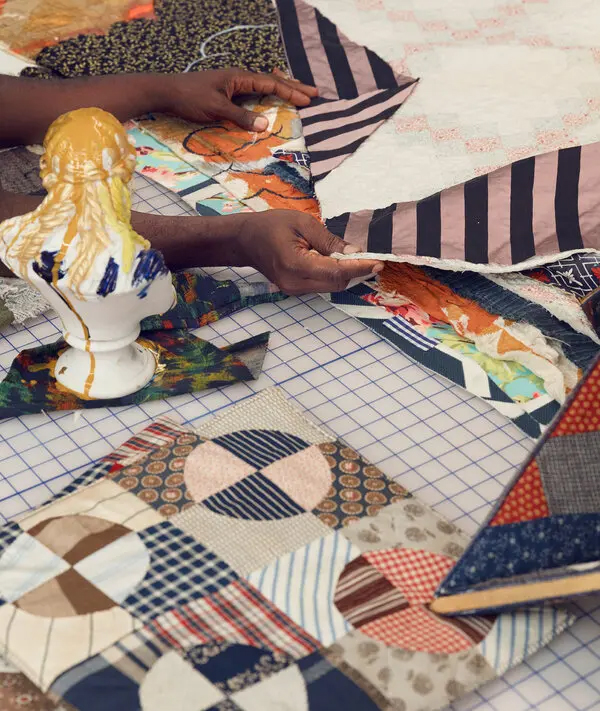
Quilts in various stages of completion. Biggers says, “Image courtesy of: The New York Times, photographed by: Giancarlo Valentine
Sanford Biggers is a multi-disciplinary artist who has created work via quilting, sculptures, and murals. The Los Angeles-raised, Harlem-based artist uses African American history and traditions for his unique works. Biggers is perhaps best known for the quilts he alters from their original antique condition. In essence, the artist injects heirloom pieces with bold paint strokes; he further decorates them with imagery… cutting into them to display an empty void.
As he told Siddhartha Mitter in an interview for The New York Times, “They’re portals, in a sense. I consider them between painting, drawing and sculpture, and a repository of memory — the memory of the body.”
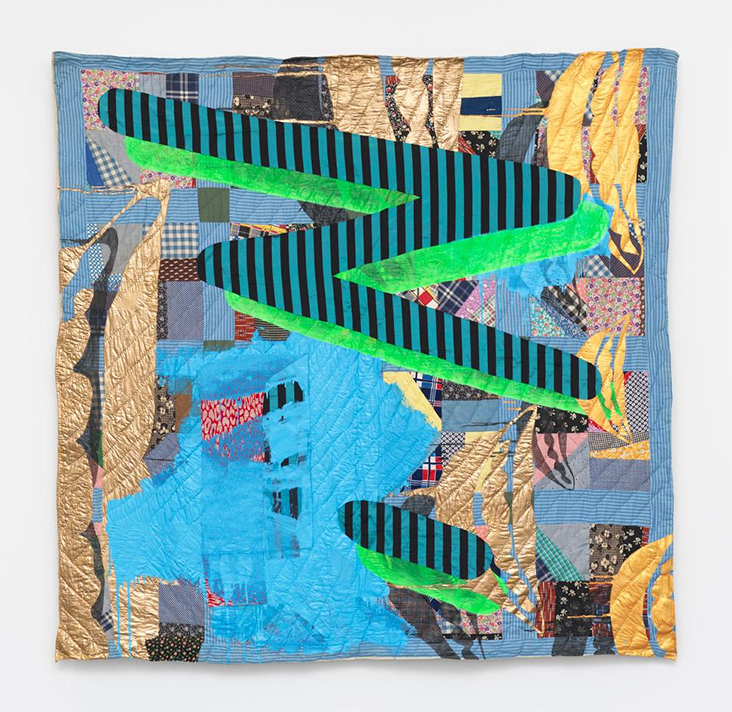
“Quilt Chorus for Paul Mooney”, 2017. The repurposed quilt was remade from an assortment of textiles, acrylic, and spray paint. Displayed at Marianne Boesky Gallery.
Image courtesy of: Wallpaper
Biggers calls his quilts “material storytelling.” As the quilts get closer and closer to completion, they begin to demonstrate a number of Biggers’ most pertinent concerns; mainly, violence in America, his personal experiences of being Black in America, art history, and Buddhism. Together, these elements present Biggers’ personal journey,
The artist’s first two quilts debuted in 2009; both were installed in Philadelphia’s Mother Bethel African Methodist Episcopal Church. The quilts were both different and similar… one quilt had a flower pattern while the other was plaid. On the flip side, both quilts had a historical map featuring both the church’s location and a number of Underground Railroad safe houses. The elements were marked with stars inside a constellation, connected with oil stick and charcoal.
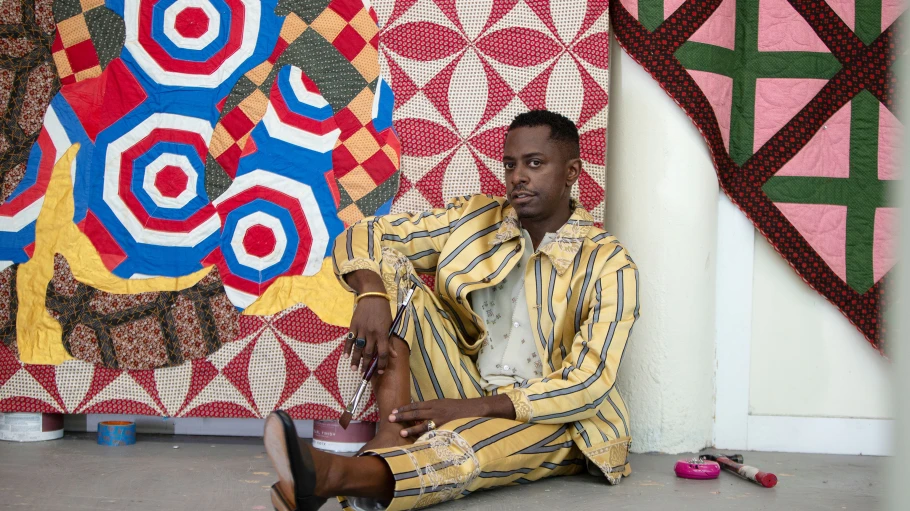
Biggers in front of a quilt from “Codeswitch.”
Image courtesy of: WWD, photographed by: Lexie Moreland
Biggers does not hide that he is interested in hidden codes… his quilts are the perfect canvas for concealed meanings. In 2020, Biggers presented “Codeswitch,” an exhibition of sixty quilts. The show’s material was a culmination of over twenty years of work that is deeply influenced by African American history and tradition. In addition, courtesy of a description from Bronx Museum, it “sustains a rich dialog with contemporary art on a national and international level, referencing urban culture, the body, sacred geometry, and American symbolism.”
Interestingly, the exhibition is two-fold… Codex is both Biggers’ quilts and the interesting idea of shifting between one linguistic code to another depending on a particular social context. Specifically with the quilts, the original maker’s intent is layered within and among Bigger’s artistry.
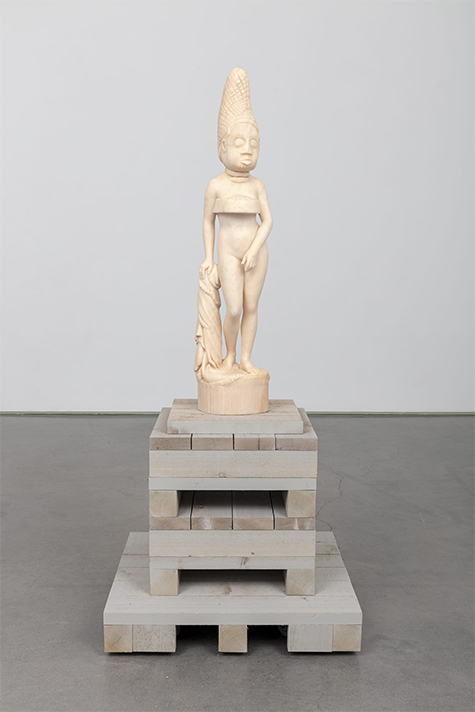
“The Ascendant,” 2020. Pink Portuguese marble on a custom cedar plinth.
Image courtesy of: Marianne Boesky Gallery
2020’s “Soft Truths” at Marianne Boesky Gallery was a fabulous exploration of the parallels between how we experience and how we understand Classical sculpture. In addition, Biggers brought his own background including what he was taught about sculptures and the perceived importance of marble sculptures in the Western world.
Biggers explains (courtesy of an interview with Paul Laster for Art & Object), “The reality is that lots of these historical sculptures were not monochromatic at all, rather they were painted. They had painted eyes or clothes or adornments that had worn off over time. As monochromatic pieces, however, they began to be used as propaganda for the purity and skill and genius of the Greco-Roman Empire, particularly because of the whiteness of the marble. When you study marble sculptures in Rome, you discover all of the different colors that were used on pieces to represent foreigners and invaders. The reason there are so many white marble statues, ironically enough, is that it was the cheapest material. The colored pieces that represent the foreigners were actually more exotic and expensive to produce, which is why you don’t see as many of them. African sculpture—to me—is equally as important—if not more—to look at, but I’ve never seen these types of pieces in marble.”
Biggers chose to take this idea and run with it… implementing what would happen if African-inspired sculptures were created in marble. Thus, the blending of European and African is portrayed in the Chimeras series… as he says, “It’s all about cross-pollination.”
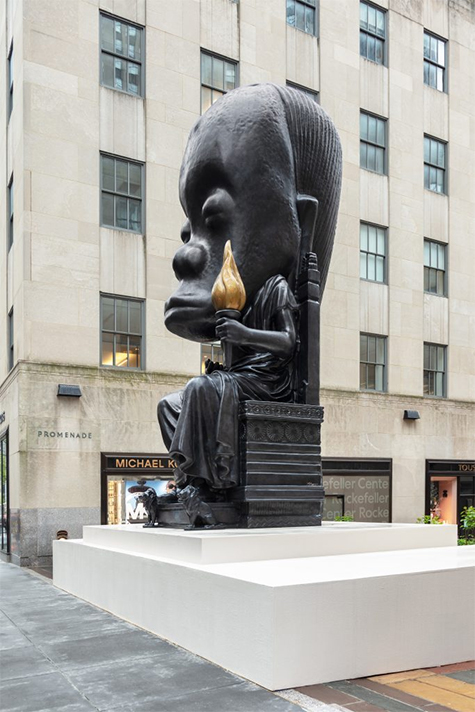
From Rockefeller Center, a side view of “Oracle,” 2021.
Image courtesy of: ArtNet News, photographed by: Daniel Greer
Last summer, Biggers debuted an enormous, 25-foot bronze sculpture at Rockefeller Center’s Fifth Avenue entrance. Commissioned by the Art Production Fund, the seated figure is a perfect combination of European figure and African mask. Titled “Oracle,” the gigantic presentation explores perceptions, mythologies, and myths within the separate cultures.
The impressive figure, unfortunately, was only visible for two months last summer. We hope that he makes another appearance sometime soon!
